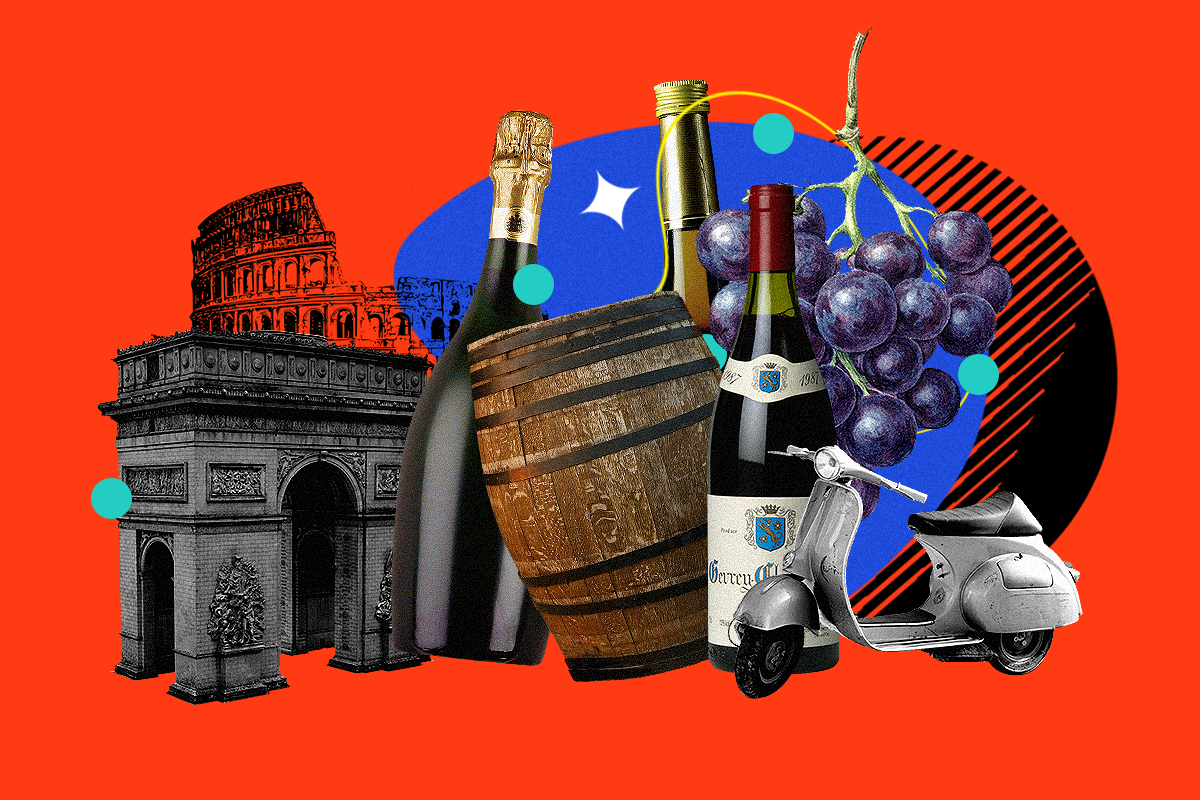Aroma Empire: The Best Investment Wines
If you’re looking to invest in wine, don’t go in completely blind. Finding the best investment wines is easier than ever, but you still need to know your stuff.

Have you ever read the drink menu at a restaurant and saw a wine that cost half your paycheck?
It may seem like a ridiculous racket, but fancy bistros aren’t the only ones making money from wine. Wine collectors have always filled their cellars with the best vino, and investors are following suit.
Wine investments are less volatile than other assets, and the wine market has performed consistently well over the last 5 years. What’s more, the pandemic has caused a spike in demand for alternative assets like investment whiskey and fine wine. This unprecedented demand for investment-grade wine combined with the thinning secondary market means investors are snatching up the best investment wines as fast as they can.
How do wines increase in value?
To determine the best wine to invest in we must consider the factors that go into winemaking that make certain bottles more valuable than others.
While there are several facets to winemaking, understanding wine investment falls under the scope of two basic questions: When? And where? Getting in-depth answers to where and when the wine was produced will allow you to identify the nuances that help make good wine investments.
Origin
Investors must determine where the wine is from, namely the region and producer. This information is usually pretty easy to determine, but obtaining proof of authenticity is important for ensuring the provenance of the wine and preventing scams. The first step is identifying the terroir, meaning a particular viticultural region like Champagne, France. Historically, some of the best investment wines are from regions in France followed by Italy and Spain, but Australia and California are beginning to step up their games.
Second, investors always look for wines produced by prestigious winemakers. Wines produced by winemakers with great reputations usually get better critic scores and do better on the secondary market. The key to finding a reliable wine investment is by purchasing from producers that demonstrate a consistent level of quality over the long term.
Time
Next, investors heavily weigh the factor of time, specifically the vintage date and age of the wine. The vintage date is when the grapes were picked and wines from a decent vintage year tend to be of higher quality. The type of grape is another bit of information when it comes to age because white wines produced from grapes like chardonnay and riesling don’t age as well as red wines made from varieties like merlot or cabernet.
Investors look to buy wines with longevity—older wines tend to be better investments because a wine that’s better able to preserve its desirable qualities over time has more longevity and is, therefore, a more durable investment. Investors who plan on making a profit on their bottle as opposed to opening it someday will need to time their wine purchases. While time in the market is just as important as any traditional investment, wines don’t appreciate indefinitely because they become less desirable once they reach peak maturity.
Best wines to invest in
Desirability is the ultimate factor that determines a good wine investment, but the problem is that it can’t be measured. While consumer surveys and critic scores should be factored into the equation, investors should look at their wine investment through the lens of supply and demand. If a wine is from an esteemed winemaker, has popularity among critics and wine consumers, and is experiencing a supply constraint, then fundamental economics tells us that bottles of that wine are a good investment.
Champagne
Champagne is one of the most popular wine types because it has become synonymous with luxury. Wine consumers pay a premium for champagne because it is perceived to be the pinnacle of alcoholic beverages, which means investors are on the lookout for particular labels from brands that have done historically well on the secondary market, like Dom Perignon and Taittinger Comtes.
The trending popularity of white champagne and rose wines has translated to the luxury market for vintage champagne brut, a drier, more cellar-worthy type of champagne. The best recent rose vintage to invest in is 2008, with labels like the Tattinger Brut Rose and the Dom Perignon Rose both performing well. Another brand to consider is Louis Roederer Cristal and it’s increasingly harder to find 2013 vintage Millesime varieties. By and large, the decreasing supply and rising demand for champagne brut makes it the ideal investment wine.
Napa Valley
The United States is an up-and-coming wine-producing country with Southern California leading the industry. The most prolific winemaking is happening in Napa Valley, and people are coming from all over to try wine from the world’s third-largest producer: the U.S. The market is flooded with Southern Californian wine, but only a handful of brands will be of interest to investors in the long term.
The diversity of the Napa Valley wine market means that there’s an option for every budget. Investors looking for a moderately priced vintaged should look at Quintessa’s Cabernet Sauvignon blends. A step above that is the Scarecrow Cabernet Sauvignon, one of only two varieties they produce. Scarecrow produces highly-rated small-batch wines that have become infamous for their quality and exclusivity. Investors looking for the most luxurious California wine must look no further than Screaming Eagle, a winery that has consistently rated the highest and appreciated fastest of any Napa Valley wine brand.
Bordeaux
The region with the highest share of the wine market in Bordeaux, France, which rightfully produces over a third of the world’s wine. While it may be challenging to find a good investment wine in such a prolific viticultural region known for cabernet sauvignon, the best wine investors have consistently allocated Boudauxs in their portfolio despite massive market diversification in recent decades.
Bourdeaux is a fundamental part of any comprehensive wine investing strategy, but it’s not as easy as picking a bottle with a high critic rating. Investors should look for an older vintage or a sought-after bottle that is becoming scarcer. The sheer market saturation of Bourdeaux wines means investors should be buying the label rather than the region. In other words, wine investors looking at Bourdeaux should focus solely on high-end wines from popular chateaus like Mouton Rothchild, Lafite Rothschild, and Petrus.
Italy Tuscan
One of the most complex winemaking regions is Tuscany, which sits within the diverse country of Italy. Tuscany and its several subregions produce a huge variety of wines, which means investors have a lot of options to choose from. Recently, local winemakers have embraced their heritage by emphasizing regional red grape varieties as opposed to popular international grapes, which gives some of the best Tuscan wines unique regional characteristics.
Tuscany is best known among investors for super wines, which are particularly sought after wines selectively made from French grapes. One of the most famous Tuscan super wines is Sassicaia, which became a popular Bordeaux alternative in the late 1960s. Other super wines investors can’t go wrong with are the prized Brunello wines from Soldera or Frescobaldi’s flagship Sangiovese. Alternatively, a well-timed purchase from a more modest brand like Vin San Giusto could also bear fruit.
Burgundy
Finally, the French region of Burgundy is the world’s second-largest wine-producing region and is arguably the fastest growing in popularity among consumers and investors alike. Burgundy wines are known for their longevity and sophistication, but lately, wine indices show that the rise in prices of Burgandy wines is second only to Champagne. Wine investors who are paying attention to the latest figures are directed their attention toward the best wines from these two French regions.
Since Burgundy prices are through the roof as of late, investors will be happy to hear that bottles of award-winning 2018 vintage William Fevre Les Clos have failed to follow this trend since last year. Other Burgandy wines that have performed well on the secondary market are the 2001 vintage Romanee-Saint-Vivant Grand Cru and the 2020 vintage La Tache Grand Cru Monopole. Investors should consider these brands if they’re looking to capitalize on the popularity of Burgundy wines.
Is wine a good investment in 2023?
Wine is one of the best investments to add to your portfolio this year, but investing in one takes a lot more than just buying bottles. On top of having extensive knowledge of the ins and outs of the winemaking industry, wine is also one of the best collectibles to invest in, so most wine investors are often also connoisseurs who properly maintain a cellar to store their wines and preserve their assets until it comes time to sell (or drink). Investing in wines means taking on many extraneous costs, so if you’re not up for it you can always use an alternative investing platform like Vint or Vinovest.
Vint is a platform where investors can buy shares in their privately managed collection of fine wines and spirits. Investors who buy shares can either hold them and profit when vint sells the asset or wait until Vint launches their secondary market where investors can buy and sell their shares. Users who join Vint’s waitlist will be able to invest in their wine collection without dealing with the underlying asset, making it the easiest way to invest in wine.

Another alternative wine investing platform is Vinovest, founded by Anthony Zhang. Vinovest’s wine experts help investors build personalized wine portfolios based on their risk tolerance, expected returns, and favorite types of wine. Vinovest takes care of storage, insurance, and other extraneous costs so that investors can focus on just the underlying asset. Vinovest helps investors time the market for the best returns and will even ship your bottle to you if you ever choose to drink your investment. Vinovest is the most convenient way for serious investors to build a diversified wine portfolio.

